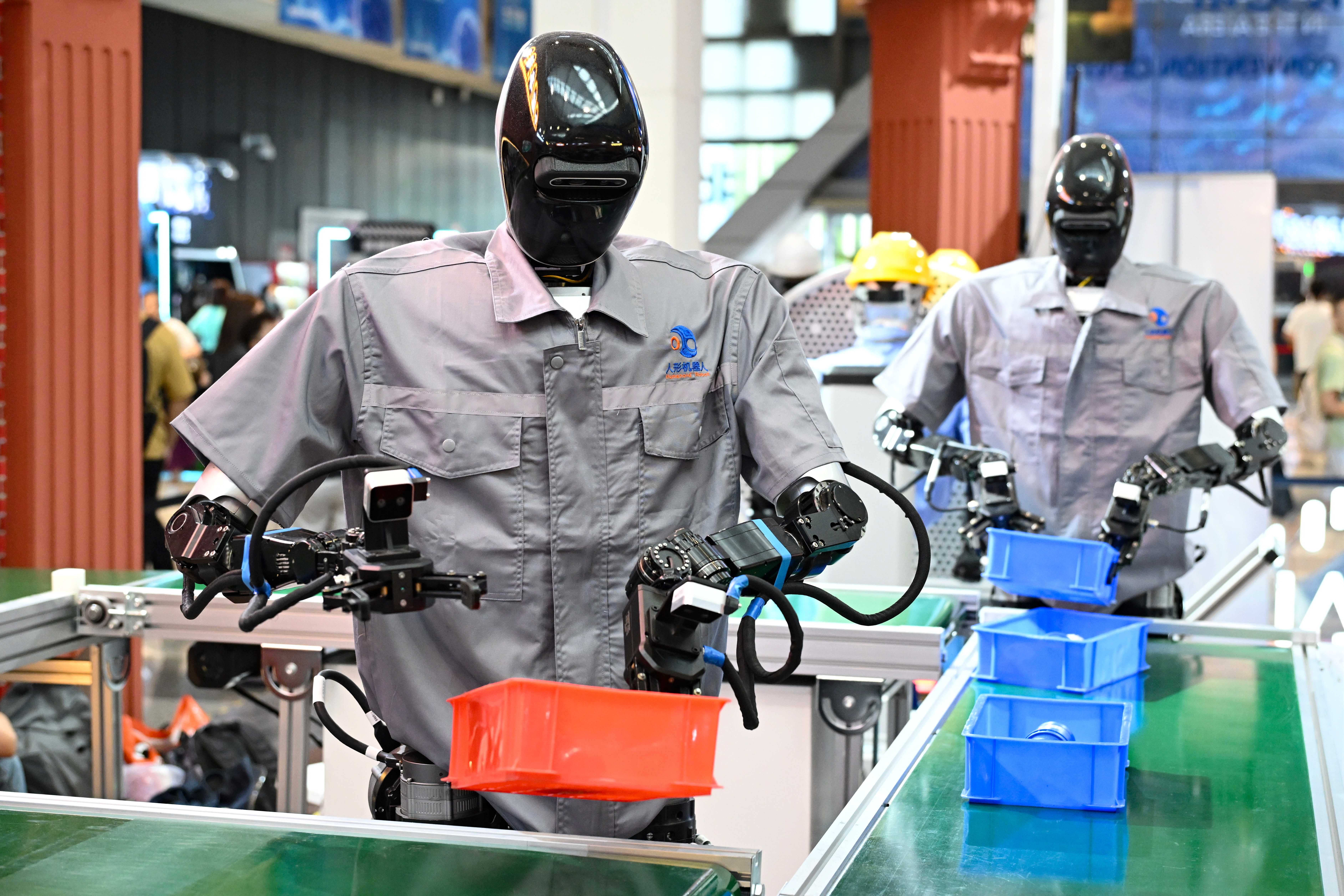Amazon's master plan to replace 600,000 workers with robots by 2033 — complete with a "good corporate citizen" play to avoid backlash from the growing divide between the tech elite and normal people
Amazon’s robot takeover comes with a side of corporate virtue signaling. The tech giant plans to automate 75% of its workload using robotics to bolster productivity — and a PR spin to make you smile about it.

With the rapid emergence of next-gen technology like generative AI and robotics, human jobs are more susceptible to extinction. Over the past few months, tech leaders have raised job security concerns if society doesn't quickly adapt to the ever-evolving landscape.
For instance, Microsoft co-founder Bill Gates claims AI will replace humans for most things, though he claimed that we'll still have a bit of control over tasks that we'd rather exclusively preserve for ourselves. He joked that no one would like to watch robots playing baseball.
Likewise, Anthropic CEO Dario Amodei claimed that AI is on the verge of slashing up to 50% of entry-level white collar jobs, leaving the youth without any avenue to fend for themselves. And has it happens, the revolution has already started taking shape.... well, sort of.
As you may know, Jeff Bezo's Amazon has heavily integrated robotics into its workforce, especially in its warehouses to automate repetitive and daunting tasks. The goal behind this is to bolster productivity and efficiency while simultaneously creating ample time for employees to focus on more important tasks.
But as it now seems, Amazon could be on the precipice of outrightly replacing approximately 600,000 workers across its warehouses with robots by 2033, at least according to leaked documents and interviews (via The New York Times).
Amazon reportedly wants to automate about 75% of its workload using robotics, which could potentially save up to 30 cents on each item it manufactures. While speaking to The New York Times, Daron Acemoglu, an MIT professor and automation expert indicated:
“Nobody else has the same incentive as Amazon to find the way to automate. Once they work out how to do this profitably, it will spread to others, too.”
All the latest news, reviews, and guides for Windows and Xbox diehards.
The report further reveals that Amazon plans to use some sort of hiring freeze to further its cause on the robotics front. This could be a huge gamble, especially since the company aims to double its sales by 2033. In the end, the company aims to run most of its operations across its warehouses using robotics with little/no human intervention.
Amazon's robotics play is already taking shape in its warehouse in Shreveport, Louisiana. The robots basically handle the rest of the process after an item is place inside a package. The hiring rate at the warehouse has already seen a significant decline, which is 25% less after robots joined the fold.
With this major milestone now in sight, we are confident in our ability to flatten Amazon’s hiring curve over the next 10 years.
Amazon
Amazon plans to use the same strategy across 40 different of its facilities by the end of 2027. Additionally, the company projects to reduce the workforce in its Stone Mountain warehouse by 1,200 employees.
But as it seems, Amazon is shying away from blatantly using words like AI and automation in the leaked documents, and has substituted them with advanced technology and cobot (humans and robots working closely to achieve a specific task).
Perhaps more interestingly, Amazon seems to have its robotic automation plan mapped out, including a damage control play to avoid backlash over replacing humans with robots. It aims to play the "good corporate citizen" by participating in community events like parades.
However, while speaking to The New York Times, an Amazon spokesman seemingly cleared the air, indicating that the documents didn't clearly reflect the company's stand on its hiring strategy as it only represented one team. "Leaked documents often paint an incomplete and misleading picture of our plans, and that's the case here".
The representative further indicated that the company plans to make 250,000 new hires as we edge closer to the festive season. However, they didn't clarify whether these would be permanent positions.
FAQ
What exactly is Amazon planning?
By 2033, Amazon aims to replace 600,000 human workers with robots, automating vast portions of its logistics and warehouse operations.
Why is Amazon doing this?
Robots don’t need healthcare, breaks, or wages — and they don’t unionize. For Amazon, it’s about cutting costs and boosting margins, even if it means displacing hundreds of thousands of people. Welcome to the future!
How is Amazon trying to avoid backlash?
The usual, like lying to you. The company is already rolling out PR messaging about being a “good corporate citizen,” highlighting community investments and worker retraining programs. Critics see this as window dressing to distract from mass job losses.
How does this connect to the movie Elysium (2013)?
In Elysium, the wealthy live above Earth in luxury while the masses are left behind. Amazon’s version? A future where robots handle the labor, executives reap the rewards, and displaced workers are told to “adapt.” You can rent it now on Amazon for full irony effect.
What does this mean for workers?
It likely means fewer stable jobs, more reliance on precarious gig work, and a growing divide between the tech elite and the people replaced by machines.
Is this just Amazon, or a broader trend?
Amazon may be leading the charge, but automation and AI are reshaping industries everywhere. The difference is scale: when Amazon moves, the ripple effects hit global supply chains and millions of livelihoods.

Follow Windows Central on Google News to keep our latest news, insights, and features at the top of your feeds!

Kevin Okemwa is a seasoned tech journalist based in Nairobi, Kenya with lots of experience covering the latest trends and developments in the industry at Windows Central. With a passion for innovation and a keen eye for detail, he has written for leading publications such as OnMSFT, MakeUseOf, and Windows Report, providing insightful analysis and breaking news on everything revolving around the Microsoft ecosystem. While AFK and not busy following the ever-emerging trends in tech, you can find him exploring the world or listening to music.
You must confirm your public display name before commenting
Please logout and then login again, you will then be prompted to enter your display name.
